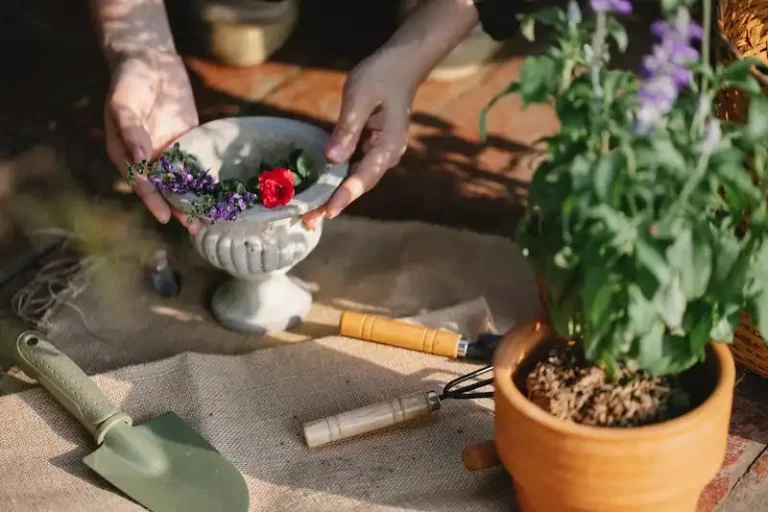Ramps, also known as wild leeks or allium tricoccum, are a type of wild onion that grow in the eastern regions of North America. They are most commonly found in the Appalachian Mountains, stretching from Georgia to Canada. Ramps are a popular ingredient in many southern dishes, adding a unique flavor to dishes such as stews, soups, and omelettes.
Ramps prefer to grow in moist, shaded areas with rich, well-drained soil. They can be found in bottomland forests, along stream banks, and in the dappled shade of deciduous trees. They are usually found in the wild, but they can also be cultivated by gardeners who have the proper conditions and permits.
The lifespan of a ramp plant is limited, usually lasting for only a few seasons. Every spring, ramps produce leafless flower stems that can grow up to a foot tall. These stems are topped with clusters of small, white flowers. The flowers eventually produce small, black seeds that can be collected for propagation. Ramps can also be propagated by dividing the bulbs and planting them directly in the ground.
Ramps are a perennial bulb, meaning that the underground bulbs will continue to grow and spread each year. The bulbs are the most harvestable part of the plant, as they have a strong, sweet onion flavor. Some people also harvest the leaves and stems of the plant, which can be used as a flavorful addition to salads or as a sautéed vegetable.
Due to their popularity and limited growing range, ramps are becoming increasingly regulated by state and local governments. In some areas, there are rules and regulations regarding when and how ramps can be harvested. For example, in Tennessee, ramps can only be harvested in the months of March and April, and individuals are limited to a single plot of ramps per person. These regulations are in place to ensure the sustainability of ramp populations for future generations.
In conclusion, ramps are a unique and flavorful wild onion that grow in the eastern regions of North America. They can be found in moist, shaded areas with rich soil, such as bottomland forests and stream banks. Ramps have a limited lifespan but can be propagated through seeds or bulb division. The bulbs are the most harvestable part of the plant, and their strong, sweet flavor can be a tasty addition to many dishes. However, it is important to follow regulations and guidelines for harvesting ramps to ensure their conservation for future generations.
Ramps: How to Forage and Eat Wild Leeks
Ramps, also known as wild leeks, are a popular foraged food due to their delicious garlic-like flavor. Foraging ramps can be a fun and rewarding activity that allows you to connect with nature and enjoy a tasty treat. In this guide, we’ll explore how to properly forage ramps and some ideas for incorporating them into your meals.
Foraging Ramps
Ramps typically grow in shaded areas, such as deciduous forests, and can be found in different zones depending on your location. They are native to eastern North America and can be found from the southern United States up to Canada. Look for them in early spring, usually around the same time as other wildflowers start to bloom.
When foraging ramps, it’s essential to do so sustainably and responsibly. Ramps are slow-growing and easily damaged, so it’s crucial to only take a small portion of the plant and leave the rest intact. This ensures that the ramps can continue to grow and reproduce. Additionally, be mindful of the area you are foraging in and obtain permission if necessary.
Identifying Ramps
Ramps are part of the Allium family and are easily recognizable by their broad, smooth, and lily-of-the-valley-shaped leaves. The leaves are usually about 4-12 inches long, and the bulbs are white or light pink. The “ramps” or bulbs are what you’ll be harvesting for consumption.
Be cautious not to mistake ramps for similar plants like Lily-of-the-valley, which are toxic and not suitable for consumption. If you’re unsure, it’s always best to consult a wild plant expert or experienced forager before consuming anything you’ve found in the wild.
Harvesting Ramps
To harvest ramps, start by carefully pulling the entire plant out of the ground. If you’re planning to use the entire plant, make sure to rinse off any soil and store them in a plastic bag or wrap them in a damp towel to keep them fresh. If you only want to use the bulbs, cut off the leaves above the white portion and discard the rest.
It’s important to note that ramps can be quite pungent, so if you have a small home garden, you may want to consider planting them away from any other crops or residential areas.
Preparing and Cooking Ramps
Ramps can be enjoyed cooked or raw, and their flavor is often described as a combination of garlic and onion. When cooking ramps, you can use them in place of onions, scallions, or garlic in your favorite recipes. Saute them as a side dish, incorporate them into soups and stews, or use them in omelets and quiches.
To store ramps, you can keep them in a plastic bag in the refrigerator for a week or two. If you want to enjoy ramps for a more extended period, consider pickling or freezing them for future use.
Remember, when foraging, always prioritize sustainability and respect for nature. Leave enough ramps behind to allow for regrowth and future generations to enjoy. Happy foraging!
Where to find
Ramps can be found in various locations, both in the wild and in cultivated gardens. They are mostly covered in forests, while some can also be found at home outside.
In the wild, ramps are commonly found in the eastern parts of North America, including the United States and Canada. They are known by their scientific name Allium burdickii and are often found in colonies. These colonies can be spotted by their yellow flowers and garlic-like foliage.
To find ramps in the wild, one should begin the search in early spring. This is when the plants start to emerge from the ground and the whole plant is visible. Be careful not to confuse ramps with similar-looking plants such as the wild onions or garlic sprouts, as they can be damaging to the ramps if mistakenly harvested.
In terms of cultivation, ramps can be planted in gardens or pots. They prefer well-drained soil and thrive in zones with colder winters and milder summers. The planting depth should be shallow, with the bulbs placed just below the surface.
Ramps have a long germination cycle, and it may take several years for them to reach maturity. During this time, it is important to water and care for the plantings regularly. Pruning the flowers is also recommended to promote better bulb development.
In terms of harvesting, it is important to follow regulations and have proper permission if foraging ramps in the wild, as their collection may be restricted in certain areas. When harvesting ramps, it is best to only take a portion of the plants, allowing them to continue growing in the future.
Ramps are becoming more popular due to their unique flavor and culinary uses. They can be used in a variety of dishes, including soups, salads, and sautés. Ramps can also be frozen, shredded, or preserved for future use.
For more information on ramps and their conservation, many articles and resources are available online. It is important to stay informed about regulations and sustainable practices in order to protect and preserve ramps for future generations.
Sustainability
Sustainability is an important aspect when it comes to the cultivation of ramps. Ramps are a species of wild leek that grow in the wild, primarily in the eastern United States, including Tennessee. They are known for their distinctive garlic-like flavor and are commonly featured in culinary dishes.
Growing ramps in a sustainable manner means following certain guidelines and rules to ensure their long-term survival. One important rule is to never pull the entire plant from the ground. Instead, only a few leaves should be harvested, allowing the rest of the plant to continue growing.
Ramps can be grown from seed or propagated using the bulbs and stalks of mature plants. When selecting the location for planting, it is important to choose an area with well-drained soil and moisture levels that are suitable for ramps. The soil should also be rich in organic material, such as decomposed mulch or compost.
During the growing season, ramps may face challenges from pests such as aphids and caterpillars. These can be controlled using organic methods, such as the use of natural predators or homemade insecticidal soaps. Additionally, applying a layer of mulch around the plants can help retain moisture and prevent weed growth.
| Ramp Species | Season | Growing Conditions |
|---|---|---|
| Allium tricoccum | Early spring | Moist, rich soil |
| Allium burdickii | Later spring | Well-drained soil |
In terms of sustainability, it is also important to consider the impact of ramp cultivation on the wild population. Harvesting ramps from the wild can be damaging, particularly if done excessively or without permission. Therefore, it is recommended to support local ramp growers or consider growing ramps at home to ensure the species’ survival in the wild.
Overall, sustainability is a crucial factor in the cultivation of ramps. By following the proper guidelines and rules, ramps can be grown in a way that preserves their wild status and allows for their enjoyment in culinary dishes for seasons to come.

